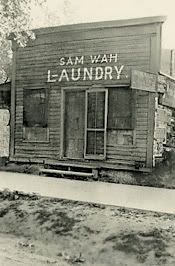The Burlingame Treaty issued in 1868 corresponded to the formal relations between the United States and China. This treaty was created so as "the inherent and inalienable right of man to change his home and allegiance, and also the mutual advantage of the free migration and emigration of their citizens and subjects, respectively for purposes of curiosity, of trade, or as permanent residents." Chinese would have the same privileges as any United States citizens despite where they live. The Chinese were protected against any discrimination, violence, and exploitation because of the friendly relations that is shared by both countries.
This treaty encouraged immigration of the Chinese into the United States due to the constructive output that the treaty laid out to the Chinese. The treaty did a lot as it provided rights for those to hold spaces at ports in the United States with Great Britain and Russia which allowed them to be able to trade with other countries. They would have the rights to hold any religious purposes that they do so value and build their own amenities while respecting others. They also had the privilege of becoming a naturalized citizen as they traveled, studied, and reside in any other country. China also became recognized as an eminent domain over all its territory that the United States would not interfere with. They had their own internal affairs that the United States took in account for and to not disturb any other relations.


James Burrill Angell (left) and President Rutherford B. Hayes (right)
In 1880 President Rutherford B. Hayes opposed the treaty and had James Burrill Angell change it so that Chinese immigration was suspended but not prohibited. Angell commissioned the idea that the United State would regulate and limit the flow of Chinese immigrants but not exclude it since there were already Chinese immigrants that were already living in the United States. The protections for the Chinese immigrants were still implemented because of those already living in the country yet it became reversed in 1882.

"Is it right for a Chinaman to jeopardize a white man's dinner?"
In 1882 the Chinese Exclusion Act took place and the Burlingame Treaty became disregarded as it implemented the deferment of Chinese immigration in the United States. This Act lasted and banned Chinese immigration to the United States for about ten years but was then repealed by the Magnuson Act in 1943.
Chinese Immigration and other events have had a huge impact on the past and it has changed how the world is today not only that but created what we’ve done throughout to make a difference for a multicultural country/world.
posted by Jackie Huynh
posted by Jackie Huynh




























